Subject Population Modeling
Main Speaker: Richard Rebarber
Professor , Department of Mathematics, University of Nebraska-Lincoln
Date: 10/3/2018
Time: 3:30 PM
Location: 107 Hardin Hall (Auditorium)
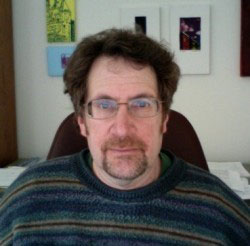
Speaker's Bio
Richard Rebarber is a Professor of Mathematics at the University of Nebraska, Lincoln. He received his Ph.D. from the University of Wisconsin, Madison in 1984, with thesis work in control theory. He spent his first 20+ years at Nebraska working on Control Theory, and has recently been working with biologists on population dynamics and other topics in Mathematical Ecology. He has been the long-time director of an applied mathematics REU Site and has extensive experience mentoring undergraduate research.Video
The Ecology and Conservation of Jaguar in Western Paraguay
Main Speaker: Jeffrey Thompson
Researcher , CONACYT Paraguay
Date: 10/22/2018
Time: 3:00 PM
Location: 228 Hardin Hall
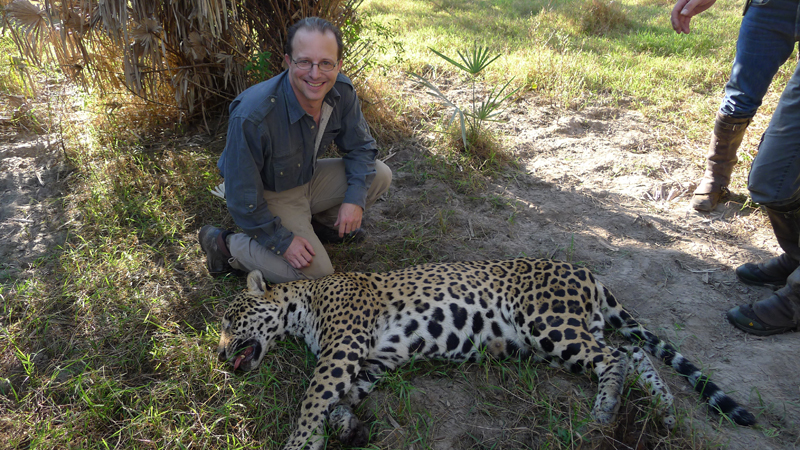
Abstract
The jaguar is the largest cat in the Americas, found from the southwestern United States southward into Argentina. The Gran Chaco and Pantanal ecosystems in western Paraguay support one of the few population strongholds but are subject to increasing anthropic pressures. My collaborators and I have documented that the largest jaguar home ranges occur in western Paraguay which indicates that conservation of the species in the region is highly dependent upon private ranch land. We have also found from large-scale camera trap sampling that jaguar densities are negatively affected by increasing deforestation. Furthermore, opportunistic or retaliatory killing of jaguars in response to livestock depredation are principal causes of mortality for the species in the region. Although jaguar exhibit tolerance to habitat loss and prey depletion in western Paraguay, their large spatial needs illustrate a critical need to mitigate the killing of jaguars in the region if a viable population of jaguar is to be maintained in western Paraguay over the long term.Speaker's Bio
Jeffrey J Thompson received his B.S. from SUNY College of Environmental Science and Forestry at Syracuse, his M.Sc. from the University of Puerto Rico-Río Piedras, and his Ph.D. from the University of Georgia. He was formerly employed by the Argentine government and the United Nations Environmental Program and is now a researcher in the national scientific council of Paraguay, a member of the Paraguayan Scientific Society, and an associated researcher of the NGO Guyra Paraguay where he is the co-coordinator of its jaguar research program. He is interested in the effects of land use on wildlife populations and movements, particularly carnivores and terrestrial gamebirds. His present research addresses the ecology of the carnivore community, particularly the movements and population dynamics of jaguar, in the Gran Chaco and Pantanal ecosystems of western Paraguay in relation to land use.
Applied Ecology and Management Around Waterfowl Management in Nebraska
Main Speaker: Todd Arnold
Professor , Department of Fisheries, Wildlife and Conservation Biology, University of Minnesota
Date: 10/24/2018
Time: 3:30 PM
Location: 107 Hardin Hall (Auditorium)
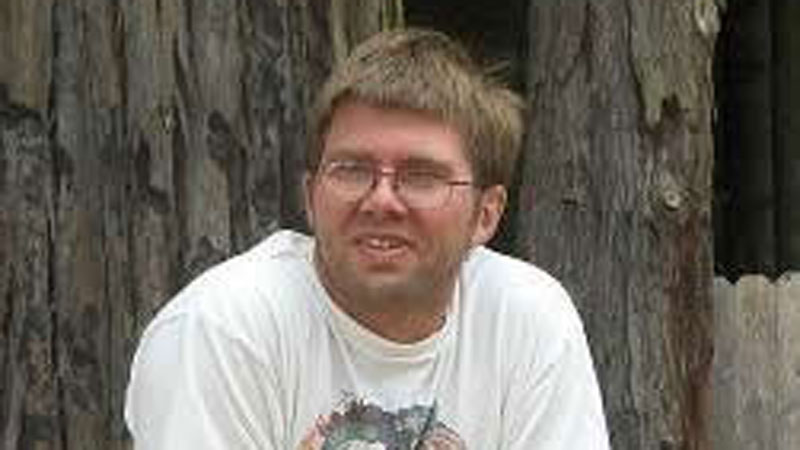
Abstract
Ornithologists have been banding birds for over a century, but these data have been used less often than they could be to answer questions about population dynamics. In this seminar, I attempt to bridge the gap between data-rich species like mallards (Anas platyrhynchos), with over 1.2 million band recoveries, to data-poor species like wood warblers (Parulidae), with just over 6,000 recoveries from 53 combined species. The most common application of band-recovery data is estimation of annual survival. By using species as random effects, I show how we can also estimate juvenile and adult survival for data-poor assemblages such as wood warblers. Moving on to fecundity, I demonstrate how we can estimate fecundity at annual and regional scales using age ratios of birds captured for banding, and I apply these estimators to prairie dabbling ducks (Anatidae) and dark-eyed juncos (Junco hyemalis). Finally, I demonstrate how banding data can be combined with harvest data to estimate population size using Lincoln estimators, and apply the method to data-rich and data-poor examples.
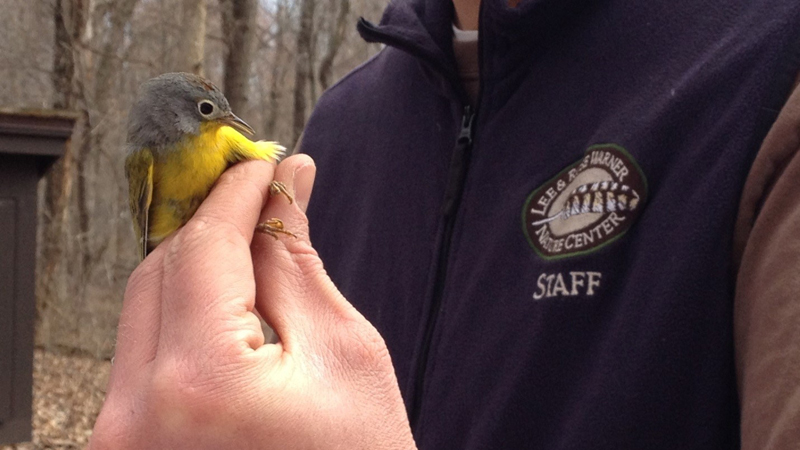
Speaker's Bio
Todd Arnold is a ecology professor at the University of Minnesota-Twin Cities. He earned his doctorate from the University of Western Ontario, studying population dynamics. His research interests focus on the ecology and conservation of wetland-and prairie-dependent wildlife, particularly waterfowl.Speaker's Contact Information
- arnol065@unm.edu
Video
Data-driven Modeling of Ecological Dynamics
Main Speaker: Hao Ye
Quantitative Ecologist and Postdoctoral Research Associate , Computational Ecology, University of Florida
Date: 10/31/2018
Time: 3:30 PM
Location: 107 Hardin Hall (Auditorium)
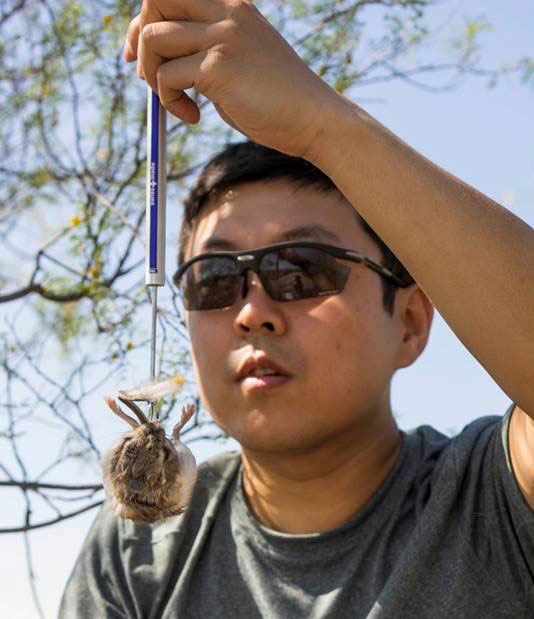
Abstract
Systems that exhibit complex, nonlinear, and even chaotic dynamics can be challenging to understand and model. In particular, unlike physics or chemistry, biology does not have fundamental mathematical laws, and many of the quantitative relationships (e.g. scaling laws) are empirical rather than proscriptive. In this presentation, two examples that apply the framework of empirical dynamic modeling to infer mechanism directly from time series are examined: (1) elucidating the role of environmental conditions for recruitment of Fraser River sockeye salmon; and (2) identifying causal drivers and algal blooms in the Southern California Bight. I conclude with an overview of current work to quantifying long-term change in complex ecological communities.Speaker's Bio
Dr. Hao Ye’s research brings together ideas from machine learning, dynamical systems theory, and ecology to understand how complex systems change over time. The work involves both methods development (i.e. R packages) and their application to diverse systems (e.g. neuroscience, astrophysics, climate and atmospheric science) to investigate the underlying mechanisms that give rise to observed patterns. Dr. Ye has degrees in computer science, experimental psychology, and oceanography, and is currently a postdoctoral associate and Moore data fellow in the Weecology Lab, department of wildlife ecology and conservation at the University of Florida. Website: https://haoye.usVideo
Earth observation by constellations of CubeSats: New opportunities and challenges
Main Speaker: Rasmus Houborg
Assistant Professor and Senior Research Scientist , Geospatial Sciences Center of Excellence, South Dakota State University
Date: 11/14/2018
Time: 3:30 PM
Location: 107 Hardin Hall (Auditorium)
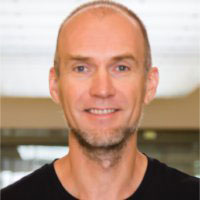
Abstract
Emerging satellite constellations comprised of hundreds of small CubeSats are transforming very high-resolution earth observation by overcoming the spatiotemporal constraints associated with conventional single-sensor satellite missions. However, the large number of constellation satellites, and relatively cheap sensor components and design, introduce cross-sensor inconsistencies and cross-calibration challenges. While superior in terms of spatiotemporal resolution, the radiometric quality, spectral resolution, and absolute calibration accuracy is not equivalent to that of rigorously calibrated space-agency satellites such as Landsat and Sentinel. A CubeSat Enabled Spatio-Temporal Enhancement Method (CESTEM) has been developed to realize the full potential of CubeSat sensing. CESTEM adopts an agnostic sensor data fusion and cross-sensor calibration technique that exploits conventional satellite systems as the gold standard. CESTEM offers a unique data-driven avenue towards cross-platform interoperability enabling spatiotemporal enhancement of spectral metrics and biophysical properties retrievable from conventional large satellite systems. In this work, CESTEM ingests high quality Landsat 8 and Sentinel-2 based retrievals of surface reflectance and plant biophysical properties as references to calibrate relatively noisy CubeSat observations and provide high fidelity CubeSat-based insights into crop growth dynamics, developing plant stress, and crop disturbances. Using CESTEM, daily 3 m RGB and NIR imagery afforded by a constellation of ~150 active CubeSats deployed in low-earth orbits, are transformed into Landsat 8 or Sentinel-2 consistent surface reflectance and leaf area index estimates. Application over a variety of agricultural landscapes and environments highlights the resolution advantage both spatially and temporally. Comparisons against in-situ observations in fields of corn near Mead, Nebraska demonstrate encouraging capability of the CESTEM-based estimates for reproducing observed spatiotemporal dynamics. The repeatable in-field information on crop condition provided by CESTEM have significant potential for powering smarter, more efficient, and productive farming at broad scales.
Speaker's Bio
Dr. Rasmus Houborg is a Senior Scientist in the Geospatial Sciences Center of Excellence (GSCE) and an Assistant Professor with a tenure home in the Department of Geography at the South Dakota State University (SDSU). Dr. Houborg's research is broadly focused on advancing the utility and integration of multi-scale and multi-sensor remote sensing data for high resolution land surface characterization. This includes novel translation of spectral signals into meaningful vegetation biophysical quantities (e.g., leaf area index, photosynthetic pigment contents), and integration of observation based constraints into land surface modeling frameworks.
After being awarded a PhD in Physical Geography at the University of Copenhagen, Denmark he moved to the United states working first as a Post-doctoral scientist at the USDA-ARS Hydrology and Remote Sensing Laboratory (2007-2009) and then as a Research Associate in the Hydrological Sciences Branch at the NASA Goddard Space Flight Center in Maryland (2009-2011). He also spent two years (2011-2013) at the European Commission Joint Research Centre in Italy, and five years (2013-2017) at the King Abdullah University of Science and Technology (KAUST) working as a Research Scientist in the Hydrology and Land Observation (HALO) group. Dr. Houborg joined the GSCE January 2018.
Speaker's Contact Information
Video
A river on trial: Assessing stream health in an agro-urban landscape
Main Speaker: Peter Levi
Assistant Professor , Environmental Science and Sustainability, Drake University
Date: 11/28/2018
Time: 3:30 PM
Location: 107 Hardin Hall (Auditorium)
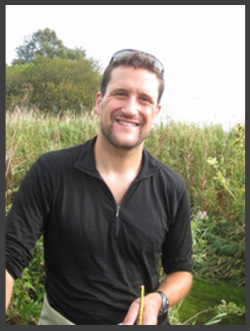
Abstract
Streams and rivers provide many ecosystem services to humans, including water filtration, flood protection, and recreation among other benefits. In the agricultural Midwest, the impact of human land-use can degrade these freshwater ecosystems and limit their ability to deliver the same degree of services as streams flowing through watersheds with more natural land-use, such as prairies or forests. The Raccoon River is a socially and economically important river in Central Iowa. However, the high nitrate loads led the Des Moines Water Works to bring a lawsuit against upstream drainage districts over the river's water quality. My recent research has explored the variation in nitrate export and loss within the Raccoon River across space and through time. In addition, we have investigated the ecological value of land conservation as reflected by stream ecosystem function. Together, these studies seek to inform the management of river and streams in human-dominated landscapes.Speaker's Bio
Peter completed his B.A. in Biology at Lawrence University in Appleton, WI. After five years as an environmental educator, research technician, and outreach coordinator, he entered graduate school in the Department of Biological Sciences at the University of Notre Dame where he earned his PhD in 2012. Peter then held research positions at Aarhus University in Jutland, Denmark, and at the University of Wisconsin-Madison. Currently, he is an Assistant Professor in the Department of Environmental Science and Sustainability at Drake University in Des Moines, IA.Speaker's Contact Information
- peter.levi@drake.edu
Video
The roles of interest, career goals, and response to challenge in student persistence; a micro- and macroscopic view
Main Speaker: Lisa Corwin
Assistant Professor , Department of Ecology and Evolutionary Biology, University of Colorado
Date: 12/5/2018
Time: 3:30 PM
Location: 901 Hardin Hall

Abstract
Numerous calls for reform in undergraduate biology education emphasize the need for more biology graduates who have skills in and exposure to “science practices” such as research. In addition, there is a national need for more students to complete STEM degrees and fill positions in research-based fields. Conducting scientific research is recognized as one of the most challenging endeavors, requiring strong interest, creativity, perseverance, and the desire to actively engage with novel and unknown challenges. These aspects cannot be taken for granted as time and practice are needed to develop such motivations and dispositions. This talk will focus on investigations of two important student dispositions that contribute to persistence in research-based STEM endeavors: interest and perseverance during setbacks. The first half will address how strong interest in biology drives students’ engagement with extracurricular disciplinary experiences (e.g., research, clubs, or internships) that are often key in affording access to graduate school. This study takes a qualitative approach to examine the role of interest and career goals in students’ engagement with and access to such experiences over the entirety of their undergraduate career. The second half will zoom-in to explore how students’ responses to research setbacks affect persistence and learning during research-based tasks in a laboratory environment. This study examines the various ways in which students cope with research challenges and whether we can predict coping strategies based on student background. By working at the macro- and micro-level, this research program hopes to develop an overarching understanding of how students become engaged, resilient researchers.Speaker's Bio
Lisa Corwin earned a B.A. in Biology at Colorado College and a Ph.D. in Plant Biology at the University of California at Davis. Her postdoctoral work was in biology education research at the University of Georgia and the University of Texas at Austin. She is now an assistant professor in the Ecology and Evolutionary Biology Department at the University of Colorado, Boulder. Lisa’s research group studies biology education with an emphasis on how students persist during challenging scientific research tasks and in their pursuit of scientific research careers. She is currently principle investigator or co-investigator for three biology education related grants from the National Science Foundation.Speaker's Contact Information
- lisa.corwin@colorado.edu
Video
Penguins in the Mist: Tales of Transformation on an Antarctic Journey for Women in STEMM
Main Speaker: Cindy Shellito
Professor of Meteorology , University of Northern Colorado
Date: 4/15/2019
Time: 9:30 AM
Location: 901 Hardin Hall
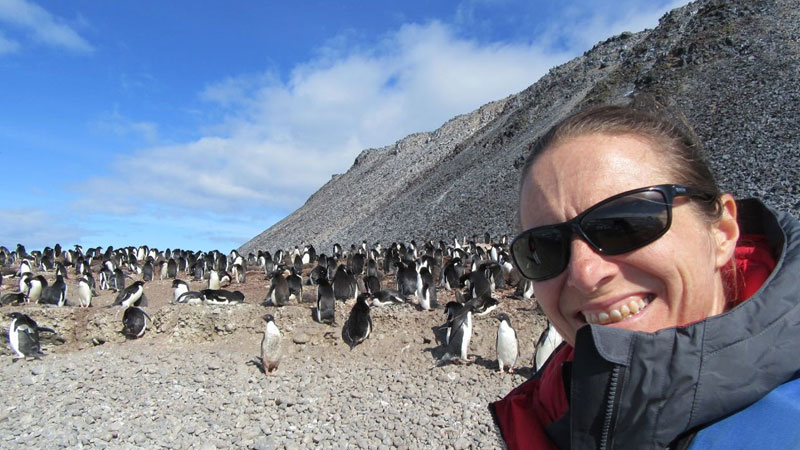
Abstract
Globally, women have the potential to bring something new to the table when it comes to making decisions about sustainability and environmental change. But what does it take to bring more women into the roles of decision makers? Homeward Bound (HB) is a major international initiative aimed at empowering women to step into leadership roles where they can make a difference. Specifically, the program supports women in STEMM in the areas of leadership development, strategic planning, and visibility, all in the context of the science of global climate change. Antarctica, one of the most fragile places on the planet, serves as the backdrop for this work in learning, connecting, and dreaming up ideas for a better world. In this talk you’ll get a peek at the HB professional development program and hear the story of the third HB journey to the Antarctic Peninsula in January 2019. You’ll see photos of penguins, whales, and icebergs, and hear stories about the women of HB and what they hope to do together. You’ll also learn how you can be a part of this as a scientist and/or as someone concerned about the future of the planet.Speaker's Bio
Cindy Shellito is passionate about engaging students in learning about climate change and inspiring them to seek ways to take action. Her PhD focused on using numerical models to simulate warm climates in Earth’s deep past. Her work now focuses more on understanding the impacts of modern global warming and supporting women in science. In 2015, she was awarded a Fulbright grant that supported a 6-month collaboration with colleagues in Ecuador where she taught meteorology and studied weather patterns in the Andes. She loves being outdoors, learning new languages, and finding ways to share her experiences through her writing.Adventures in Deciphering Weather and Climate Change in the Ecuadorian Andes
Main Speaker: Cindy Shellito
Professor of Meteorology , University of Northern Colorado
Date: 4/15/2019
Time: 3:30 PM
Location: 901 Hardin Hall
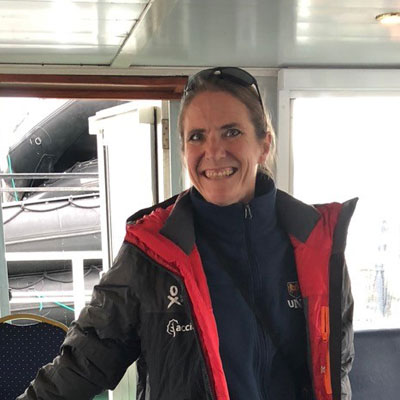
Abstract
The paramo is a broad grassland above 3000 meters in elevation that stores rainwater for more than 300 thousand people in the city of Cuenca, Ecuador. Despite the importance of this region to the water supply, weather records only date back to 2013, so it is difficult to know whether perceived changes in rainfall are a threat to this region. Most weather and climate models inadequately capture patterns of atmospheric circulation in this region. In this talk, I share my experiences in Ecuador working with colleagues at the University of Cuenca to interpret weather observations from a new network of stations positioned along an altitudinal gradient from the city of Cuenca (2500 m) to the UNESCO Biosphere Reserve of El Cajas National Park (4400 m). As a first step, we measured lapse rates in this region to improve mapping of temperatures by models. Additional work has examined evaporation rates in the páramo and made attempts to use the Weather Research and Forecasting Model (WRF) to understand observed rainfall patterns. To expand meteorological expertise among scientists in the region, a part of my work also involved developing of a graduate course and a field camp in meteorology for young investigators and sharing teaching strategies with colleagues through seminars and workshops. Together, we developed an educational model that could be employed in other regions of the world to build expertise in understanding impacts of changing environments.Speaker's Bio
Cindy Shellito is passionate about engaging students in learning about climate change and inspiring them to seek ways to take action. Her PhD focused on using numerical models to simulate warm climates in Earth’s deep past. Her work now focuses more on understanding the impacts of modern global warming and supporting women in science. In 2015, she was awarded a Fulbright grant that supported a 6-month collaboration with colleagues in Ecuador where she taught meteorology and studied weather patterns in the Andes. She loves being outdoors, learning new languages, and finding ways to share her experiences through her writing.Interactions of Landscape Structure and Management of Northern Bobwhites
Main Speaker: James A. Martin
Associat Professor, Wildlife , Warnell School of Forestry and Natural Resources, University of Georgia
Date: 5/9/2019
Time: 9:00 AM
Location: 107 Hardin Hall (Auditorium)
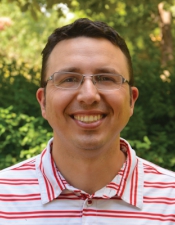
Speaker's Contact Information
- jmart22@uga.edu